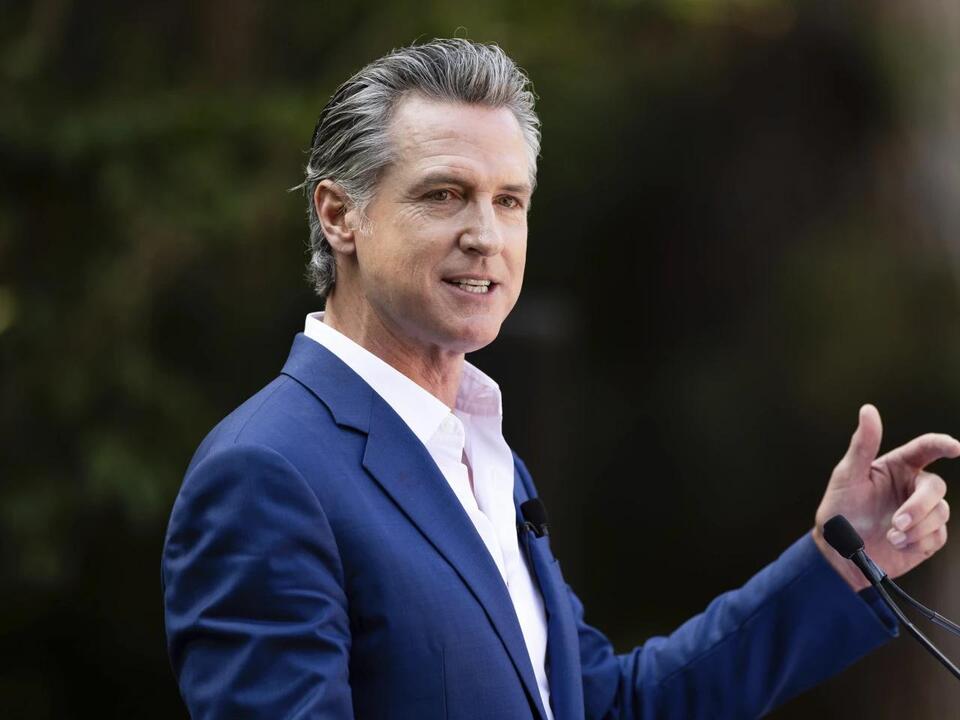Physical Address
304 North Cardinal St.
Dorchester Center, MA 02124
Physical Address
304 North Cardinal St.
Dorchester Center, MA 02124

SACRAMENTO, Calif. — California and South Carolina are taking significant steps to regulate cellphone use in schools, with state officials set to discuss the issue on Tuesday.
California Governor Gavin Newsom has reached out to school districts, encouraging them to limit students’ access to smartphones while on campus. Meanwhile, the South Carolina State Board of Education is anticipated to approve new guidelines aimed at curtailing students’ phone access during school hours.
These initiatives are part of a wider movement seen across various states, including Utah, Florida, and Louisiana, that aims to mitigate distractions caused by cellphone usage in classrooms and address concerns related to the impact of social media on the mental health of younger generations.
Despite these plans, implementing effective cellphone bans has proven to be a complex challenge. Many schools have existing policies prohibiting cellphone use, but enforcement remains inconsistent.
In his letter to school districts, Newsom emphasized the need for immediate action to help students remain focused in their educational environment. He highlighted the potential dangers that smartphones pose to youth well-being, a concern that gained traction this past June when U.S. Surgeon General Vivek Murthy urged Congress to consider warning labels on social media platforms.
“Every classroom should be a place of focus, learning, and growth,” Newsom articulated. He noted that collaboration among educators, administrators, and parents is essential to create an atmosphere where students can fully engage in their education, unencumbered by cellphone distractions and social media pressures.
Earlier this summer, Newsom announced his intentions to address the issue of student smartphone use. The recent announcement is not a legally binding mandate but serves as a strong encouragement for districts to take action.
The governor’s efforts are grounded in a law passed in 2019, which authorized districts to regulate student smartphone access during school hours. The dialogue surrounding cellphone bans is not a new phenomenon, but many argue that authorities often resort to prohibitive measures instead of exploring ways to incorporate digital devices as educational tools.
Antero Garcia, a professor at Stanford University’s Graduate School of Education, voiced concerns about this recurring debate. He stated, “What I’m struck by is society’s inability to kind of move forward and find other kinds of solutions other than perpetually going back to this ‘Should we ban devices?’ conversation as the primary solution to something that hasn’t worked.”
He further emphasized that while suggesting a reduction in cellphone use is a commendable idea, the practical implications for educators can be quite different when the school year begins.
Several districts in California, including the Santa Barbara Unified and Los Angeles Unified school districts, have already implemented policies banning student cellphone use in recent years.
However, some educational advocates argue against a statewide blanket ban, believing such decisions should rest with individual districts. Troy Flint, spokesperson for the California School Boards Association, remarked, “Cellphone usage and social media usage on campus is certainly a serious issue and one that deserves a close examination. But those decisions are very specific to certain schools and certain communities, and they need to be made at a local level.”
While there is no universal solution for minimizing the risks associated with smartphone use among students, the movement is beginning to foster discussions on potential actions that districts could take. David Goldberg, president of the California Teachers Association, noted, “It makes sense for us as adults to be looking and trying to take care of students and allow them to have safe spaces to learn.” He stressed the importance of involving students and educators in these conversations to develop effective strategies.
Source: Associated Press



